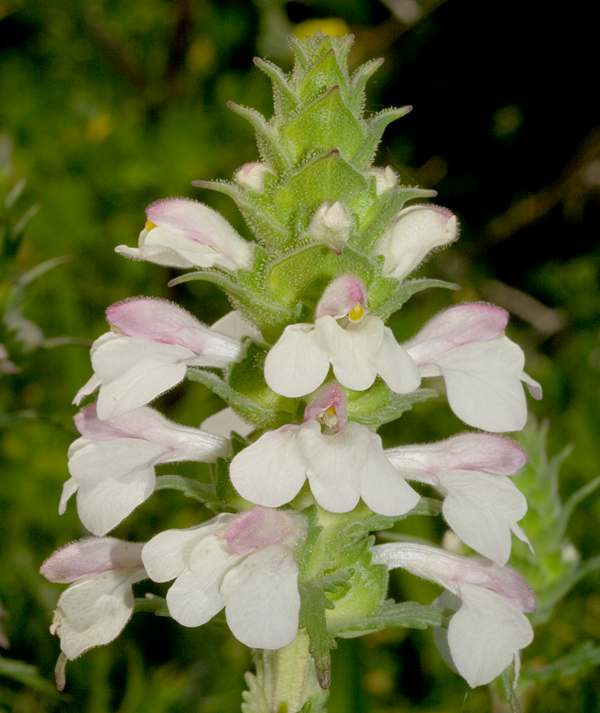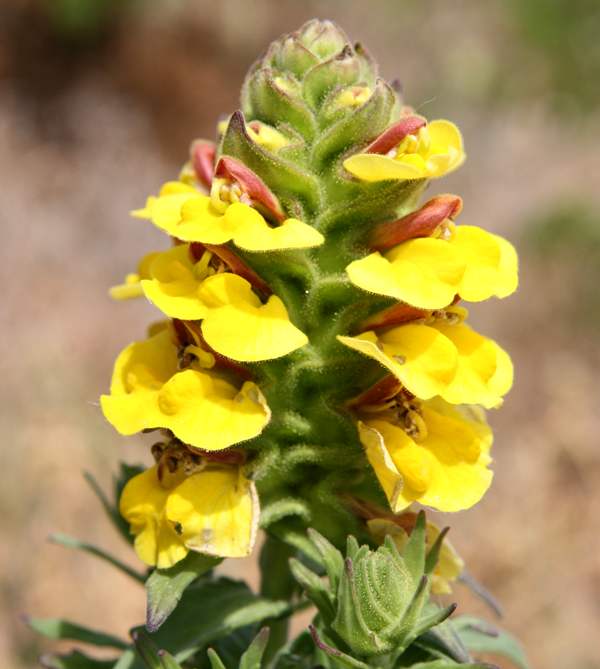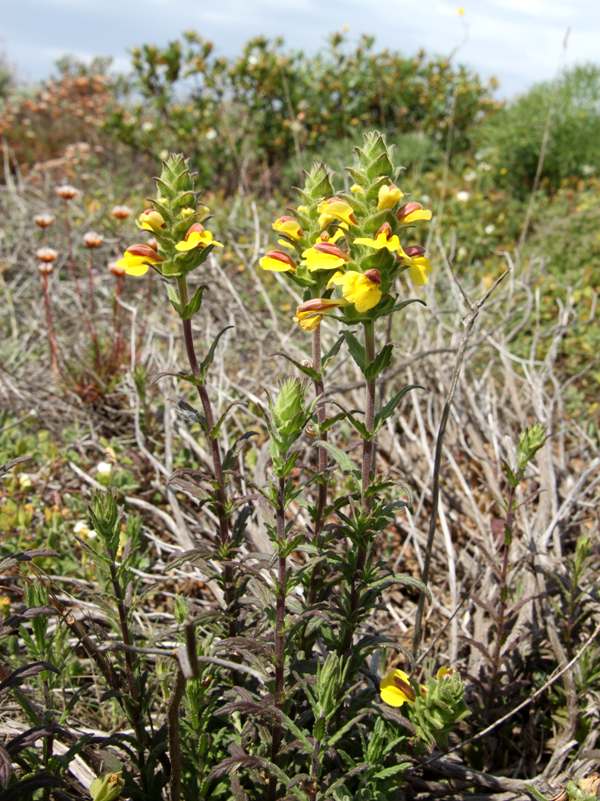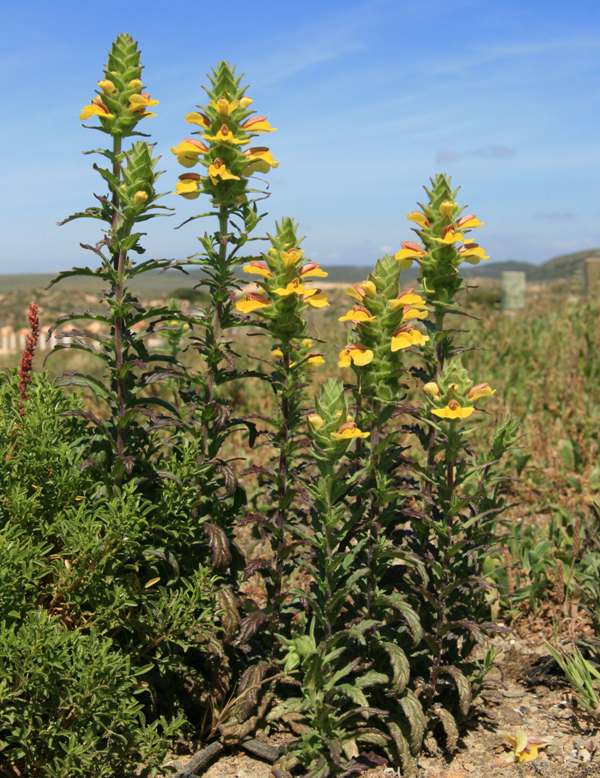Bellardia trixago - Bellardia
Phylum: Magnoliophyta - Class: Equisetopsida - Order: Lamiales - Family: Orobanchaceae

This member of the Broomrape family is semi-parasitic.
Description
A hairy, short to medium height annual wildflower with opposite linear-lanceolate toothed lower leaves and untoothed heart-shaped uppermost leaves eaves, the plants have a single flower spike on an erect stem. The flowers are normally white with pink-flushed lips, but they can sometimes be yellow.

Distribution
The symmetrical, four-sided plants are very attractive and found throughout the Mediterranean region.
Habitat
The pale mauve colour form is common in grassy places and in the garrigue. The flowers are normally white with pink-flushed lips, but they can sometimes be yellow. It can be found on abandoned farmland, on roadsides and in the garrigue. The yellow one more commonly occurs in sand dunes in the Algarve.
Flowering times
Both colour forms of Bellardia flower from March until June.

On the coast and in sand dunes is a good place to look for yellow Bellardia.

These specimens were photographed in the Algarve in Portugal in May.
Please Help Us: If you have found this information interesting and useful, please consider helping to keep First Nature online by making a small donation towards the web hosting and internet costs.
Any donations over and above the essential running costs will help support the conservation work of Plantlife, the Rivers Trust and charitable botanic gardens - as do author royalties and publisher proceeds from books by Pat and Sue.

